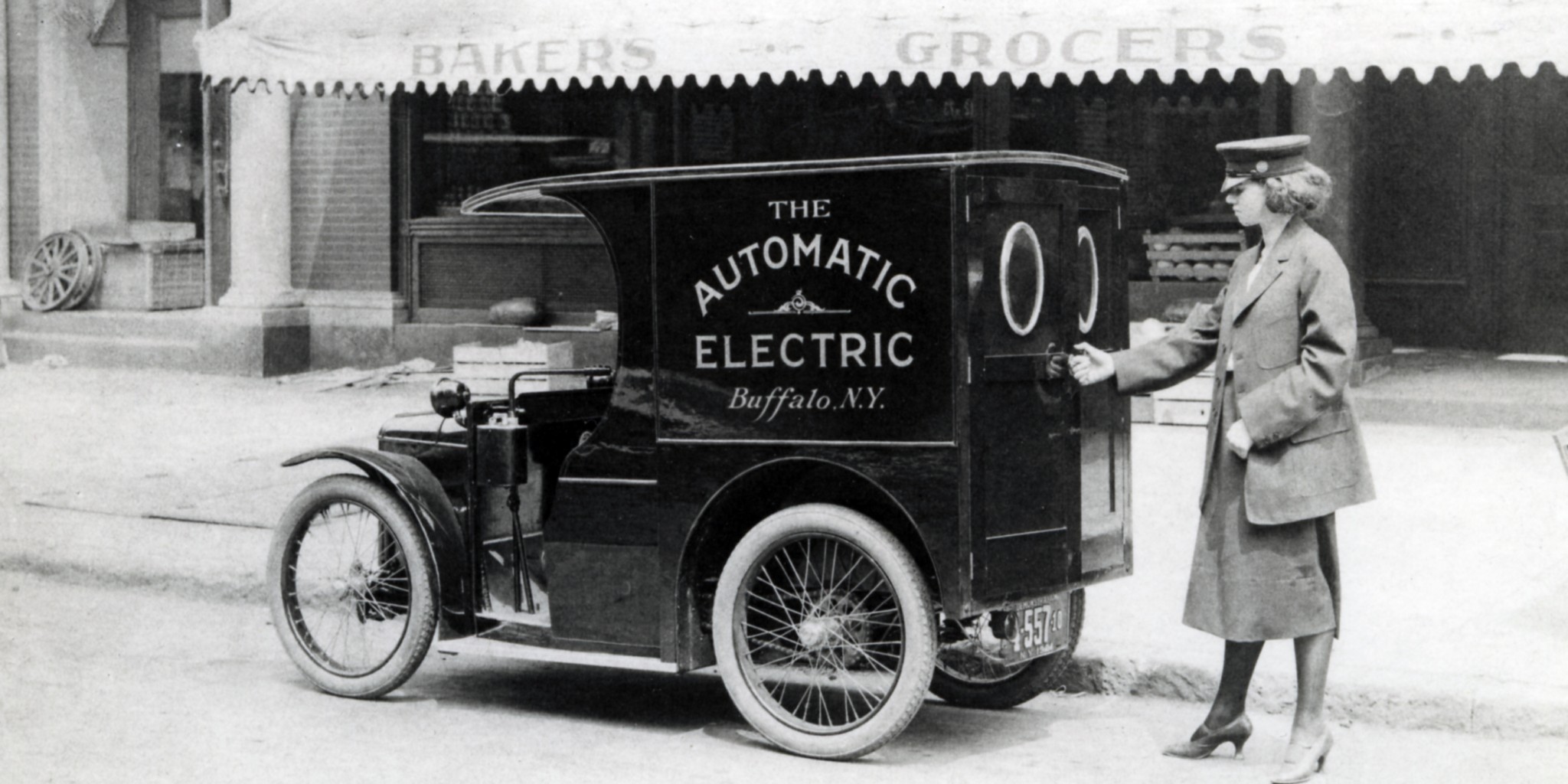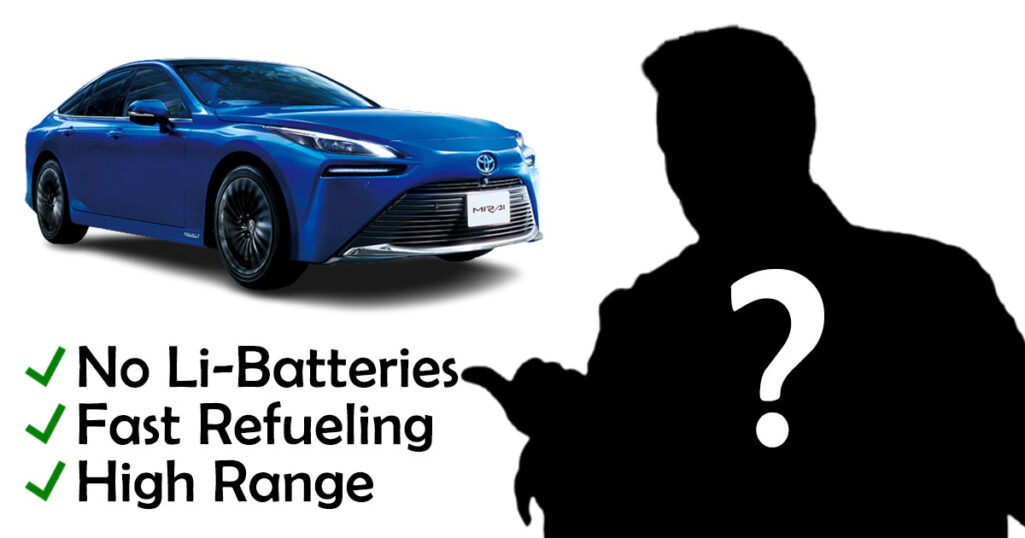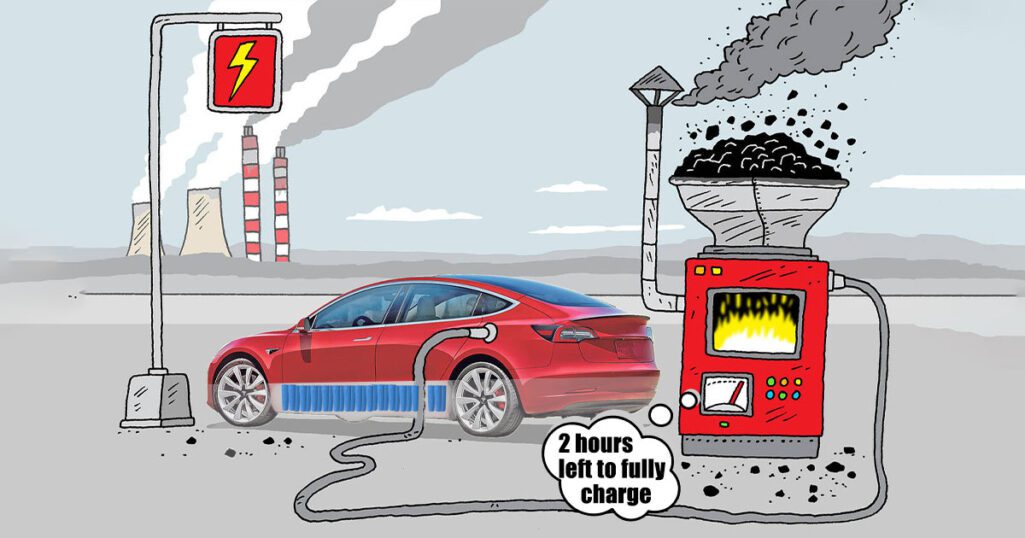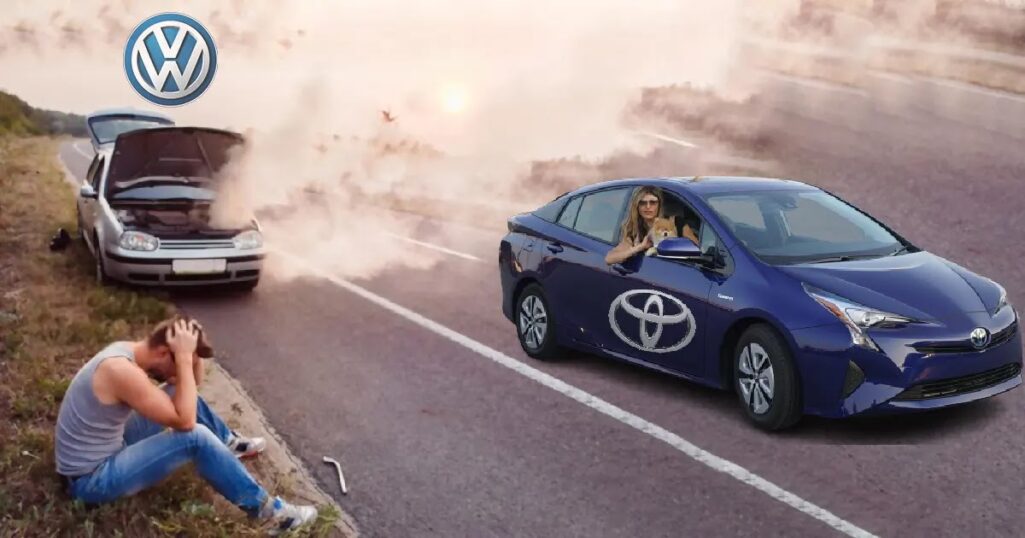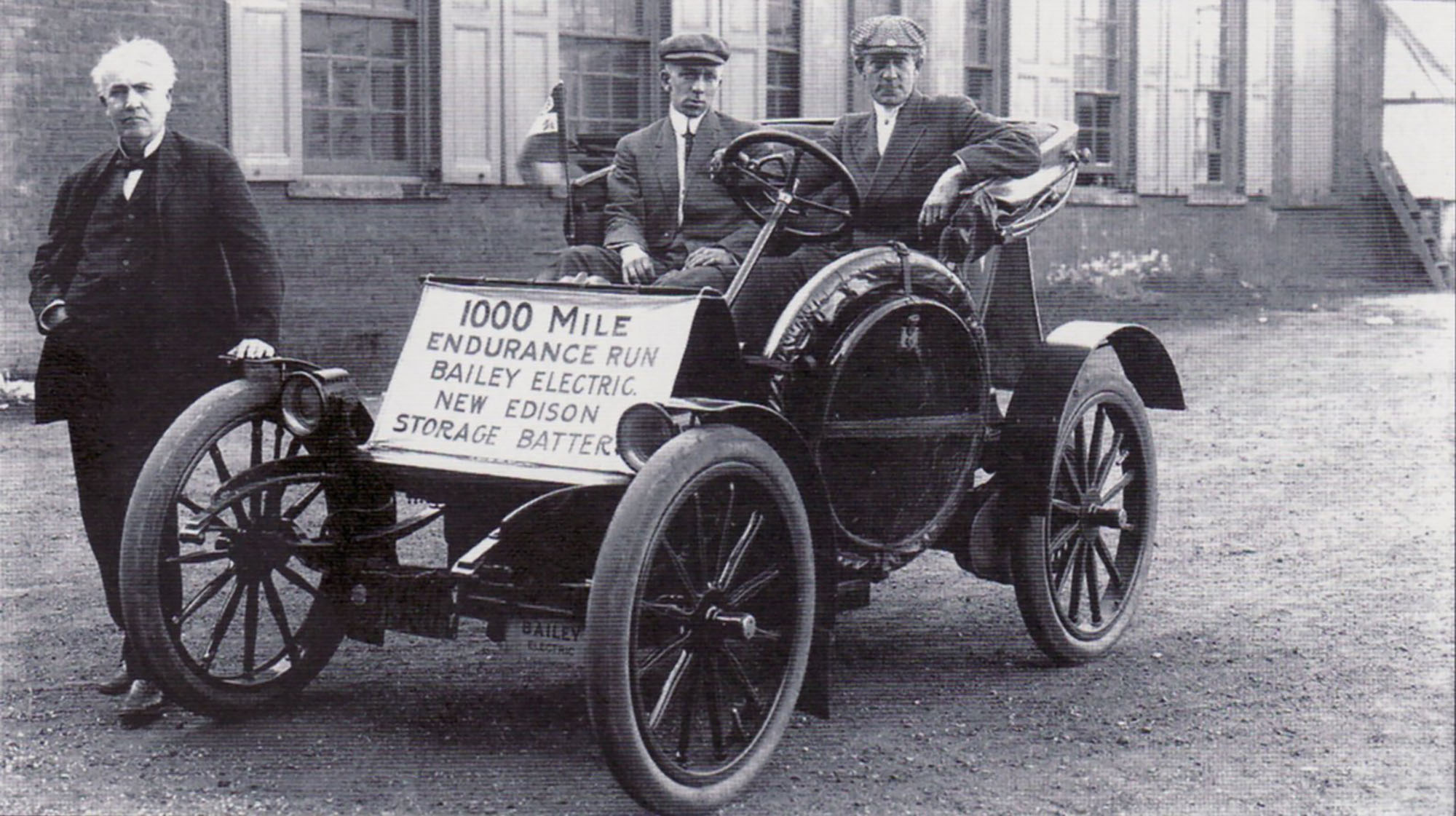
Electric automobiles appeared to be the future of transportation to inventor Thomas Edison in the early 1900s.
Although Edison is most recognized for his innovations, such as the light bulb and motion pictures, he also constructed three electric automobiles that used his nickel-iron Edison Storage Batteries. He is shown here standing next to a model that departed New York in September 1910 on a 1,000-mile commercial “ideal tour,” charging along the way and finishing with a climb atop New Hampshire’s Mount Washington.
Electric automobiles had already been on the road for more than 15 years by the time Edison’s battery (a longer-lasting, lighter-weight upgrade over earlier lead-acid batteries) was ready for this trip. More electric automobiles were sold in the United States in 1899 and 1900 than any other form of car. In 1903, London had more electric automobiles than internal combustion engine vehicles.
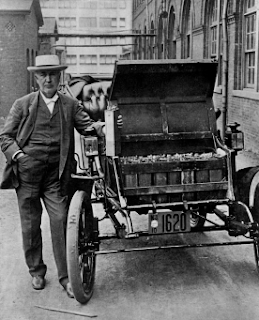
“THE PROBLEM SO FAR HAS BEEN TO BUILD A LIGHTWEIGHT STORAGE BATTERY THAT WOULD OPERATE FOR LONG DISTANCES WITHOUT RECHARGING.”
However, the initial EV boom was short, as Edison’s battery arrived just as Ford’s more economical Model T was gaining popularity. Nonetheless, as late as 1914, Edison and Henry Ford tried to make a low-cost electric car. Ford told reporters in New York in January of that year, “The issue so far has been to design a storage battery of little weight that will work for extended distances without recharging.” According to Ford, the two imagined a 1,100-pound automobile with 405 pounds of battery equipment and a $600 price tag. “How does it stand up against the big, heavy, and costly electric cars?”
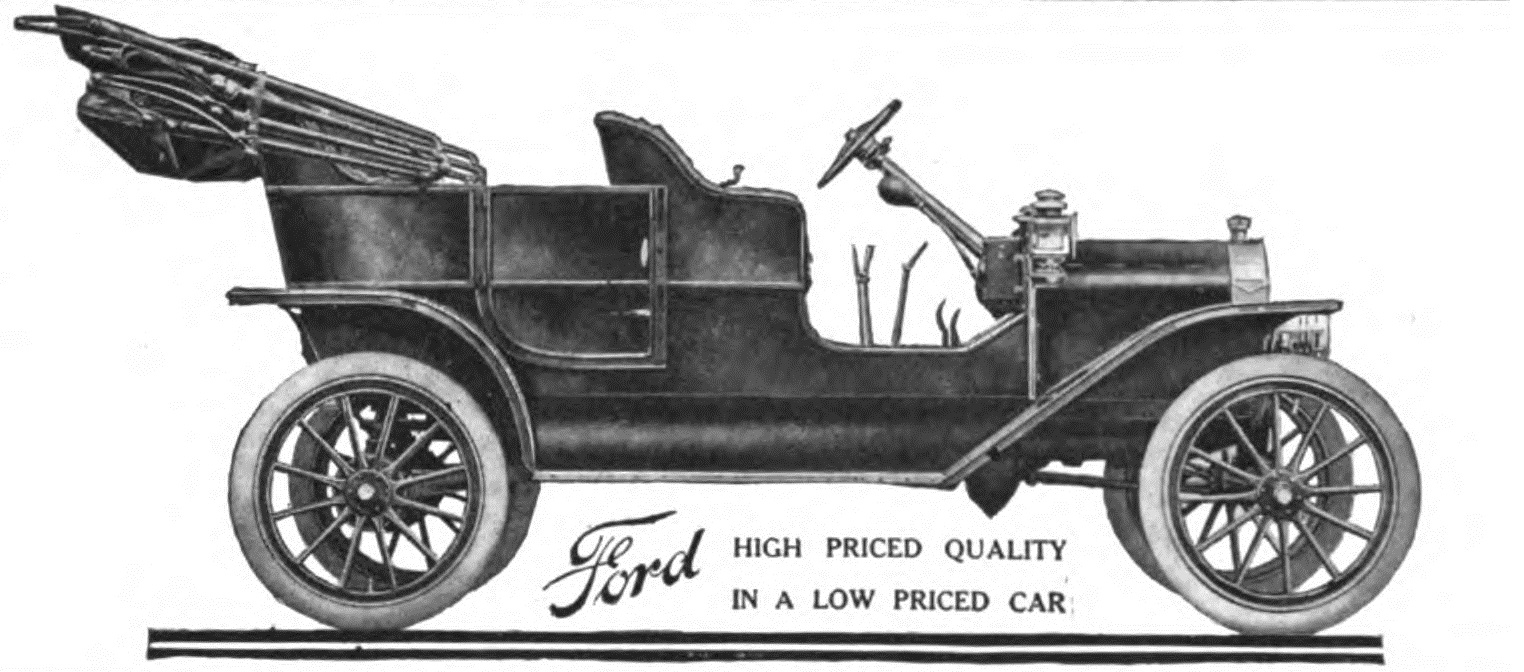
The fundamental concept of an electric vehicle propulsion system, with its rechargeable battery pack powering an electric motor, provides efficiency benefits over the internal combustion engine. According to the US Department of Energy, electric motors can convert 75 percent of the chemical energy from batteries to power forward motion (some energy is wasted as heat). Still, internal combustion engines can only convert 20 percent of the energy in gasoline to power forward motion. Tesla Motors, the electric Tesla Roadster electric car manufacturer, says that the Roadster has an 88 percent driving efficiency.
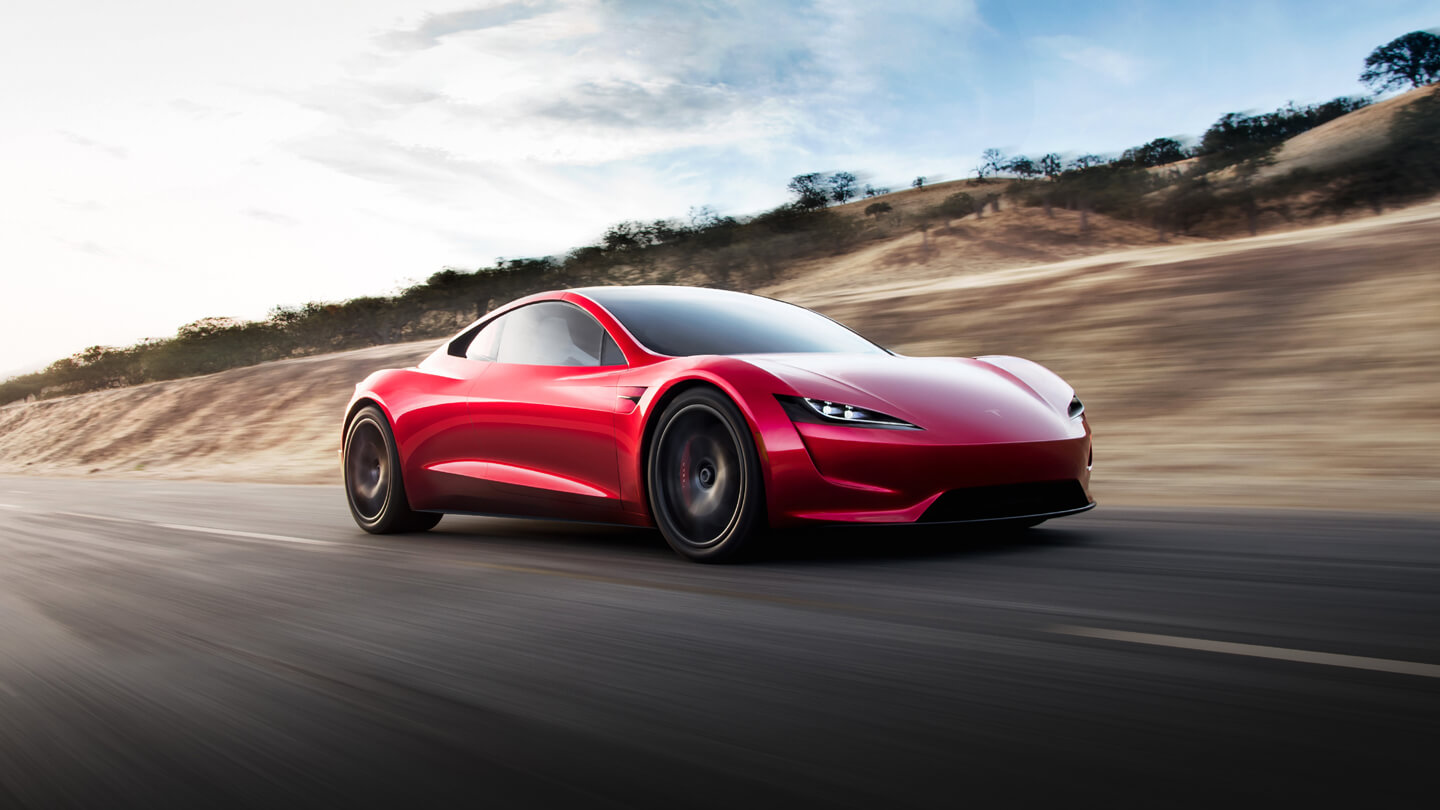
The Ford-Edison project ultimately failed, owing in part to battery issues. The last new American electric automobile constructed during Edison’s period, according to a history of the electric automobile published by the Institution of Electrical Engineers and the Society of Automotive Engineers, was a 1921 model, the Automatic, capable of driving 25 miles per hour and 60 miles on a charge. The Automatic cost $1,200, which was more than four times the price of a Model T at the time.
